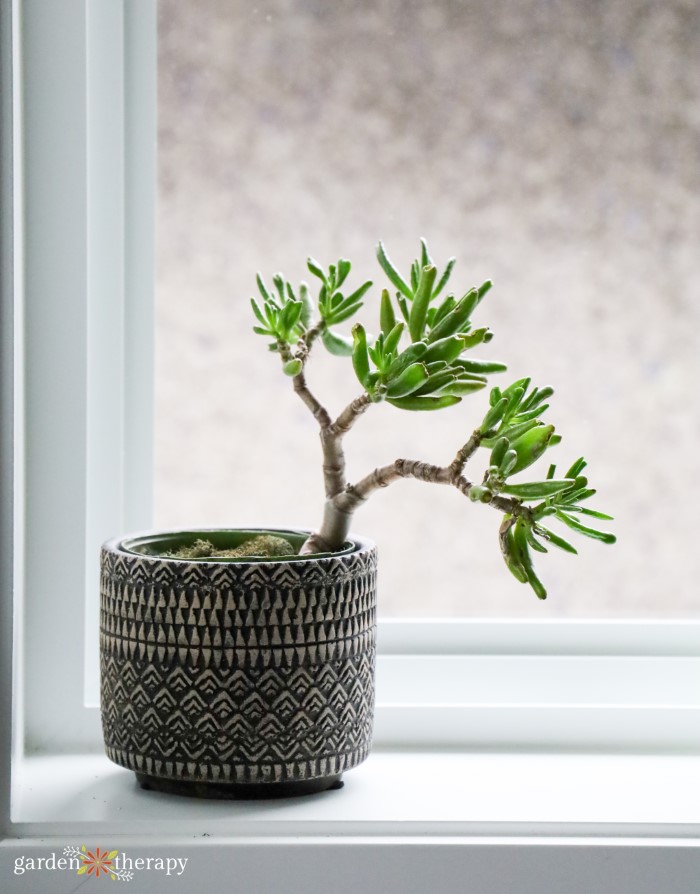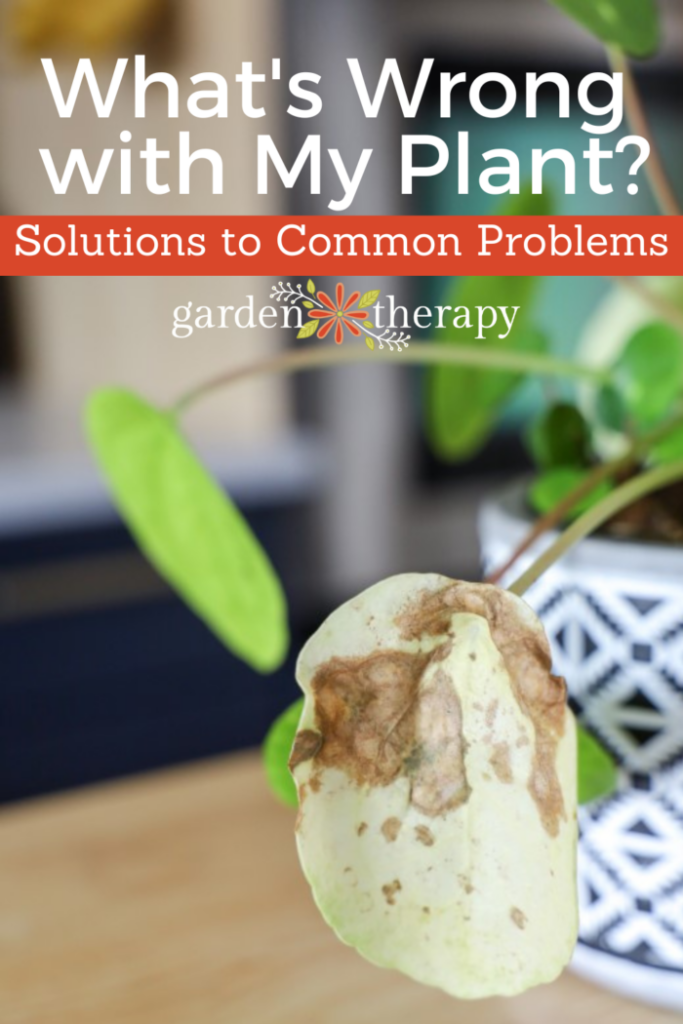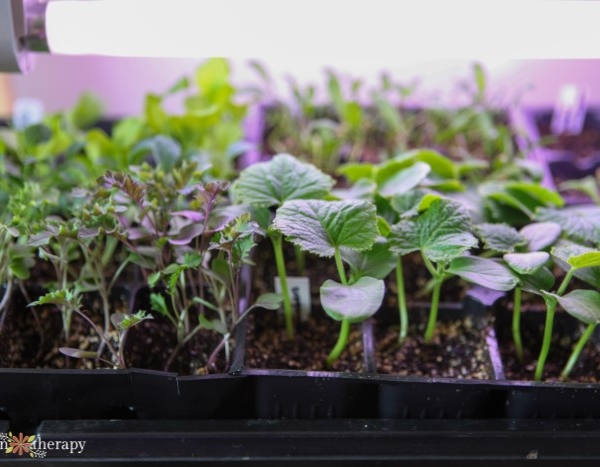Help—what’s wrong with my plant!? First, take a deep breath. Your plant baby will be okay because together, we’re going to get to the bottom of why you have a plant drooping, losing its leaves, wilting, and all the other common signs that your plant is unhappy.

Whether it’s an Instagram DM or a comment on a blog post, I get a lot of questions from people asking what’s wrong with my plant. I mean a ton of big HELP!! or SOS messages for plant parents who are panicked about their plants dying.
While I wish I could help you all and get to the bottom of it, the reality is that I need to be there to figure out what’s going on. There are a lot of factors that could be at play.
You’ll have to do some detective work to figure out exactly what’s going on, whether that’s your plant losing leaves or turning yellow.
I’m going to lead you through some step-by-step checks you can do to get to the bottom of why your plant is unhappy. You’ll be able to figure out what’s wrong with your plant and how to fix it!
This post will cover…
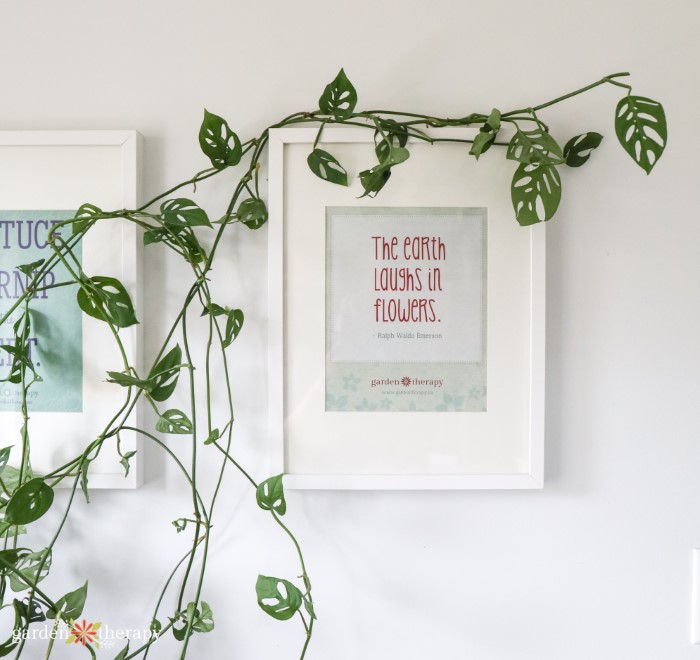
How Do I Diagnose What’s Wrong With My Plant?
People will often start googling frantically about their plant’s issues and cross their fingers for a solution. Just like going to a doctor, one symptom of illness could point to many things. For example, yellowing leaves could be overwatering AND underwatering, not enough light AND too much light.
So how do you figure out what’s truly wrong with your plant? Well, you need to know what conditions your plant likes and then see if you’re giving it just that.
Check to see…
- How much water does your plant like?
- How much sun does your plant need?
- Is it best to grow them inside or outside?
- Does it like humidity?
- Is it small enough to grow in a pot?
- How often does it require fertilizer?
- What are the natural conditions where the plant is native?
Understanding the answers to these questions will make you consider whether you’re satisfying all the plant’s needs.
Below, I’ve outlined many of the problems and how you can fix them and turn your plant back into happy growth.
What’s Wrong With My Plant?
Go through these checklist items one by one. I’m positive one of them will be the reason your plant isn’t doing so hot.
Watering
This is first on the list for good reason. New plant owners struggle to figure out a watering schedule, whether inside or outside plants are the concern.
When we notice something is wrong with our plant, we rush to water it. But keep cool for a second, as too much water can also be a problem.
We should water our houseplants only when they have fully dried. Before watering, dip your finger in the soil to test its moisture levels.
If it’s bone dry or even hard, it’s time for some water. A plant drooping or one that has crinkled leaves often indicates this.
If it’s still moist, then put down the watering can. Soggy or plump leaves could indicate there’s too much water, especially when it’s a succulent plant losing leaves.
Of course, every plant will have different requirements when it comes to how much water they want. Make sure to look into your plant’s specific needs.
For a more thorough guide on how often to water plants, check out this guide here.
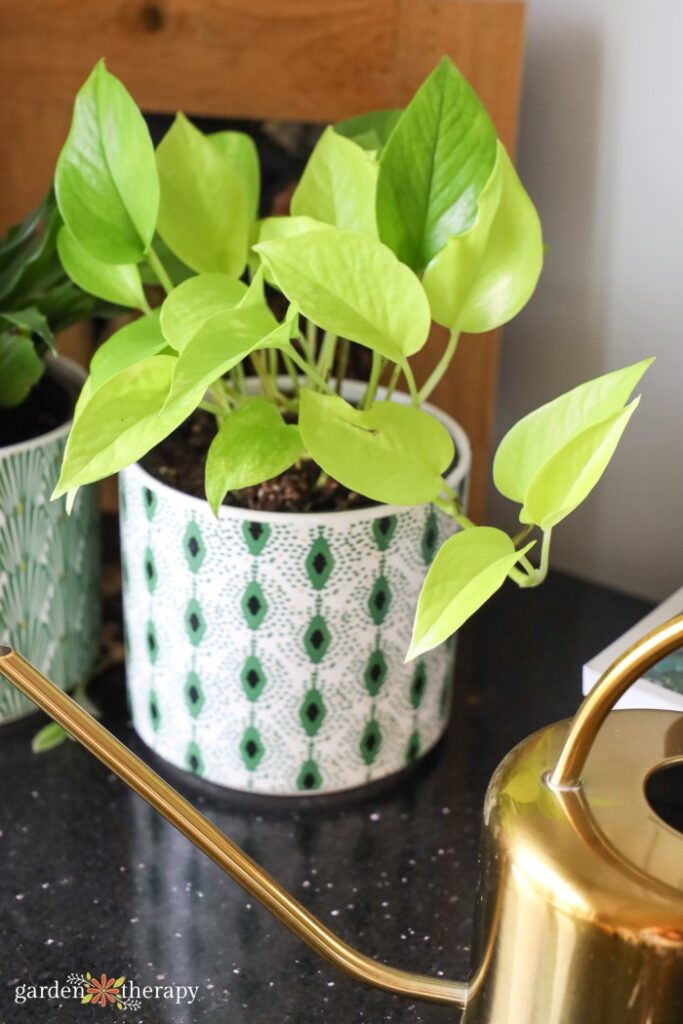
Root Rot
Root rot comes from overwatering your plant or when you have a plant in a pot with no drainage holes. The roots sit in too much water without any air circulation and begin to rot, making them useless. Then, the plant can’t get any water or nutrients and will begin to die.
If your soil is often wet or moist, pull up the plant and inspect the roots. Root rot will have a smell, and the roots may appear darkened (even black) and mushy.
If you appear to have root rot, then you will need to remove all the infected roots. Here’s what to do:
- Begin by thoroughly washing the soil from the roots. Use clean scissors to cut away all infected roots.
- Toss out the soil it was in and thoroughly clean the old pot.
- If the old pot didn’t have drainage holes, add them or get a new one. Your plant needs them!
- Place your clean plant and healthy root system into the pot with brand-new potting soil.
When the entire root system is affected, you may be better off to try and propagate a still healthy plant cutting from the top of the plant. Follow this propagation guide to do so.
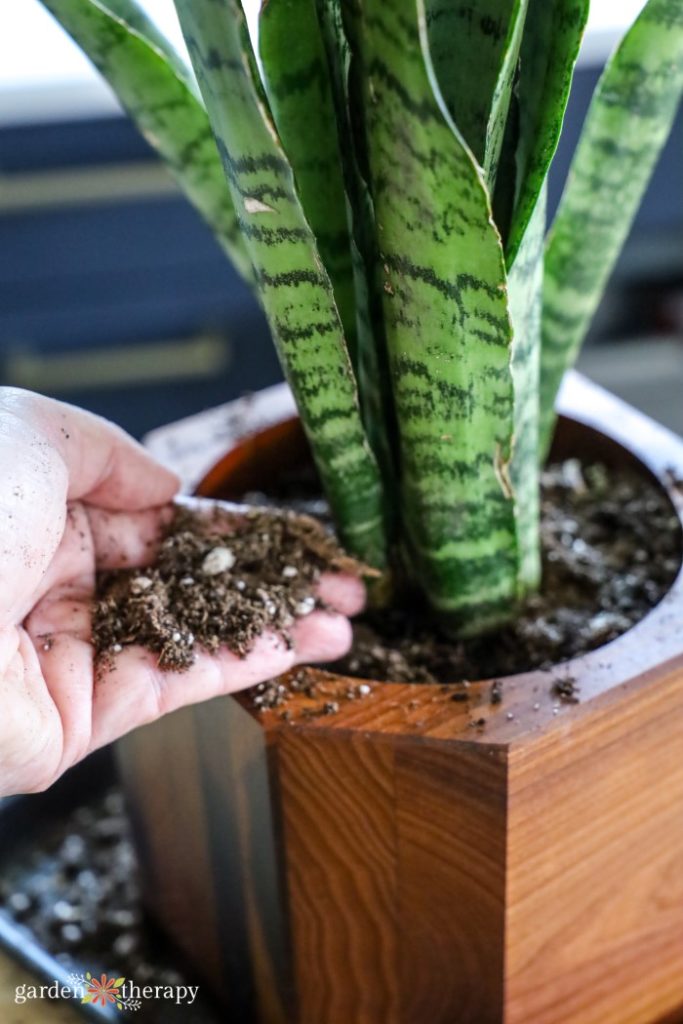
Overgrown Pot
Just like us, plants get bigger. While we outgrow clothes, they outgrow pots. A plant that has slowed down its growth or stopped growing altogether may have outgrown its pot. A plant can live in this condition for a while before the leaves, and then the plant, begin to die.
Check for signs of roots peeking through the drainage holes to see if your plant needs a new pot. Then, gently remove the plant from the pot. If it continues to hold the shape of the pot, and there are plenty of roots in sight, it’s time to upgrade the plant to a bigger home.
If you don’t want your plant to be in a bigger pot, consider dividing the plant into two or three new plants instead.
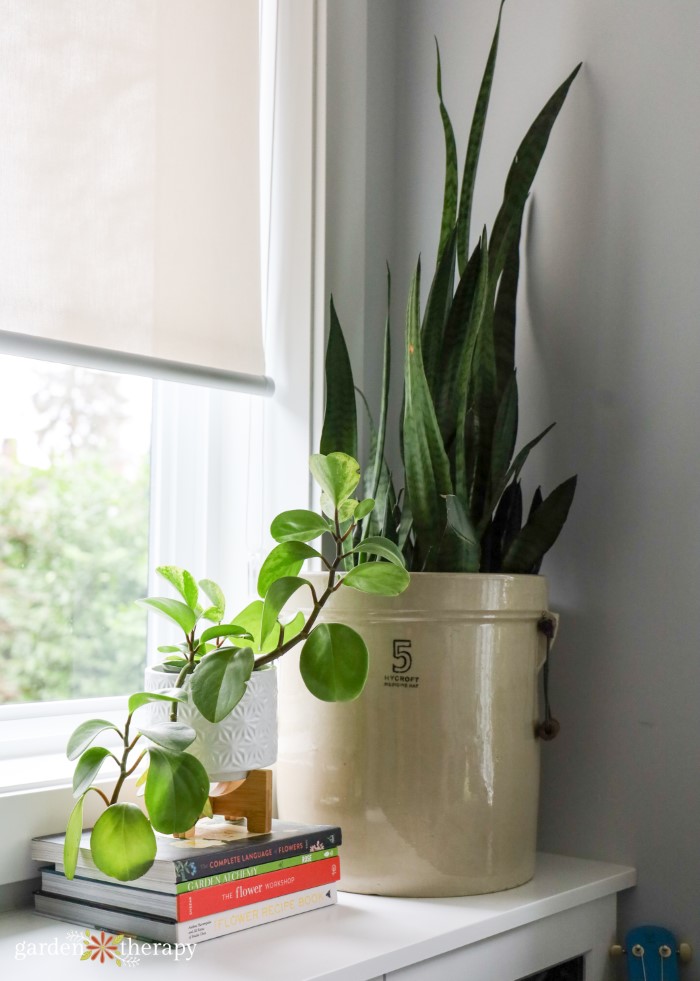
Light Issues
Light issues are another big problem. Once again, it can be either insufficient or too much light. First, check to see what kind of light your plant prefers.
Here are some common terms
- Direct light: plants who love direct light want to be right at a sunny window, ideally facing south or west. They should get 6 hours of sunlight.
- Indirect light: these plants tend to be placed a little further from the window or through a sheer curtain. They still want that 6 hours of sunlight but at some distance.
- Low light: plants with this classification get very little light, being either far from the window or in a room with partial shade.
- Full sun: this plant wants 6-8 hours of direct sunlight. Anytime a plant is advertised as full sun or partial sun, choose full sun when you can.
- Partial sun/shade: partial shade means protecting it from the full-on bright afternoon sun. It likes 4-6 hours of direct sunlight every day.
- Shade: this plant likes 4 hours of sunlight, ideally in the morning or late afternoon.
I advertise low light plants when really, it means they’re just more tolerant of it. These low-light plants will still grow best when they get a decent amount of sunlight. After all, all plants need the sun to create energy and live.
Alternatively, some people give their plants too much light, and the leaves can burn. This is why it’s essential to know your plant’s individual needs.
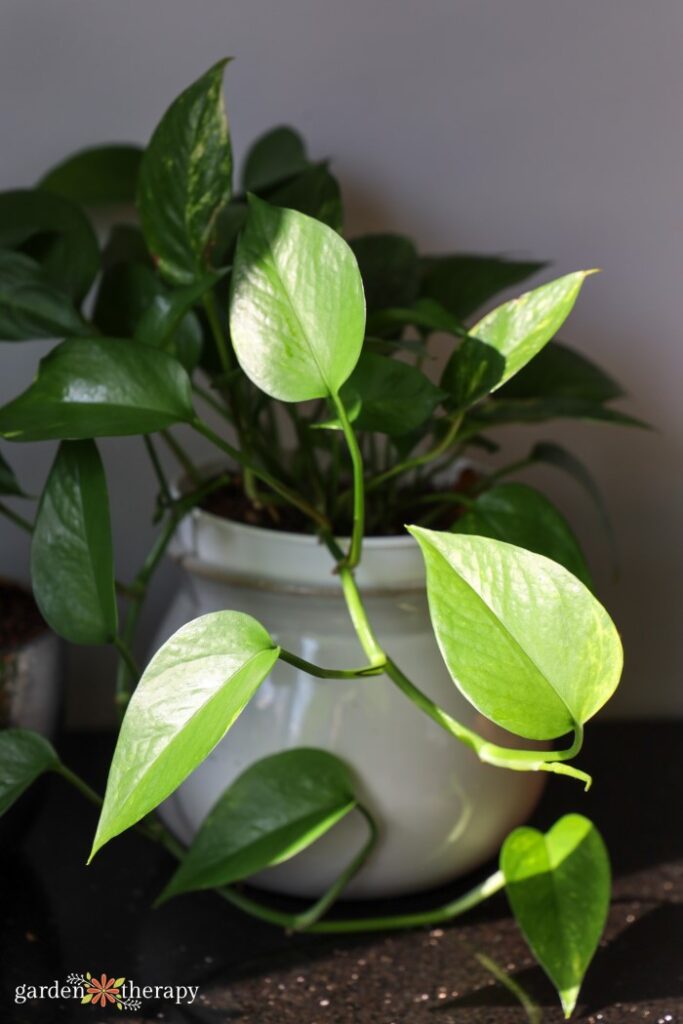
Pests and Diseases
In some cases, you’re doing everything right. A pest or disease can also infect the plant and be hard to get rid of.
For pests, you’ll have to look for signs of them. This can be the pests flying around themselves or hanging out on leaves, eaten or chewed foliage, waste like poop or honeydew, and eggs or larvae. If you suspect you have a pest, here are some of the most common pests and how to treat them. Fungus gnats are very common for houseplants.
The best way to prevent pests is by checking new plants thoroughly before buying them, using sterile compost and soil, and keeping the plant healthy and clean.
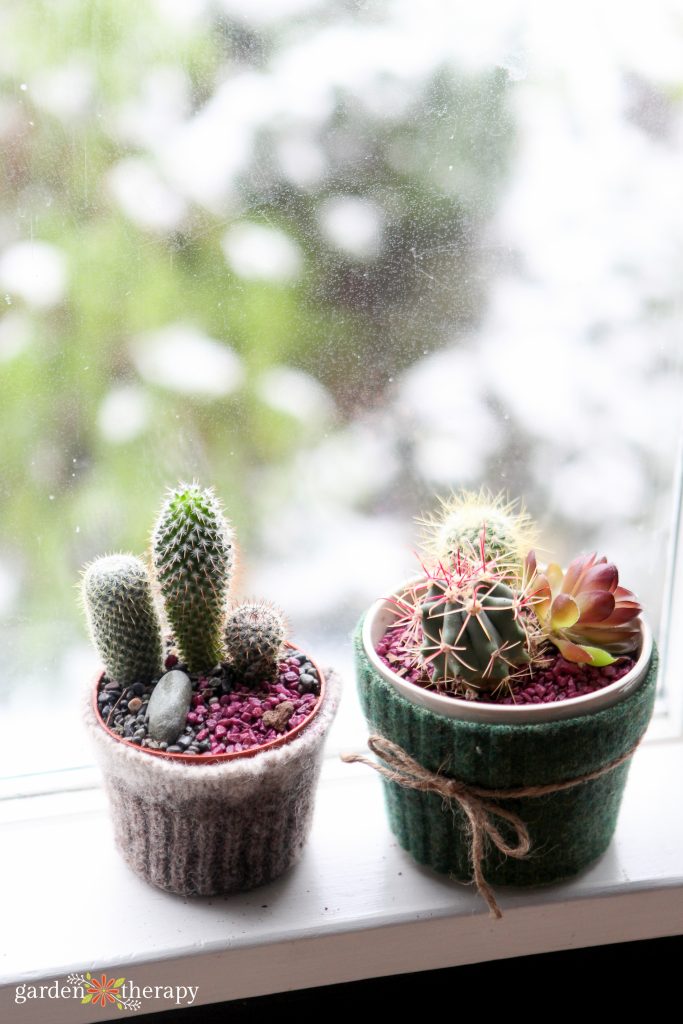
Shock
When people ask me what’s wrong with my plant, I often ask them another question. Have you changed any of the plant’s conditions lately?
Sometimes plants can react poorly to new environments. This can mean moving it inside to outside or vice versa, bringing it home from a garden centre, putting it in a new pot, moving it to a new location in the house, or placing it somewhere new in the garden.
In the case of shock, there’s not much you can do about it. The plant will get over it and adapt to its new location. Ideally, you don’t want to change too many conditions for the plant at once. One at a time is best to prevent your plant from going into shock.
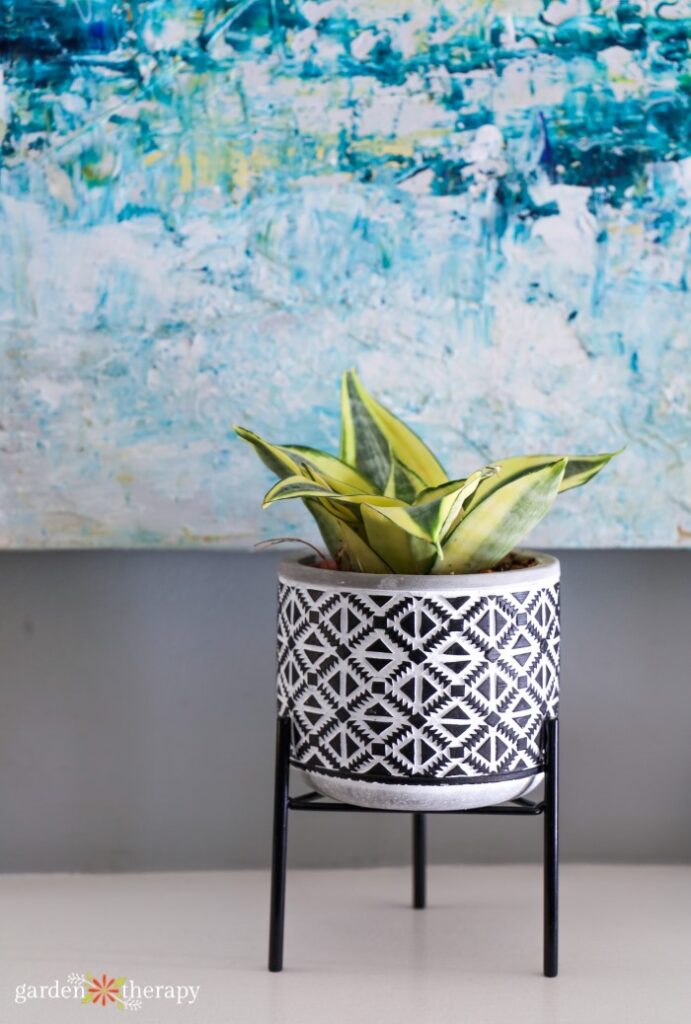
Aging
Sometimes, our plants are just getting old. When our plants live in optimal conditions for a while, they can live a very long time. If they’re in less ideal conditions, we reduce their lifespan.
Plants will also lose leaves naturally over time and replace them with new ones. If you have a plant losing leaves, check to see if they are older ones growing on the outside or near the base of the plant. Those ones will naturally fall off, and your plant is doing just fine.
But if you find that the newer leaves aren’t doing well, the plant will likely face one of the issues mentioned above.

I hope this helps answer the question of what’s wrong with my plant. Just taking a moment to think through the conditions and inspect the plant allows you to understand what’s really going on to help revitalize your plant.
More Help for Growing Houseplants
